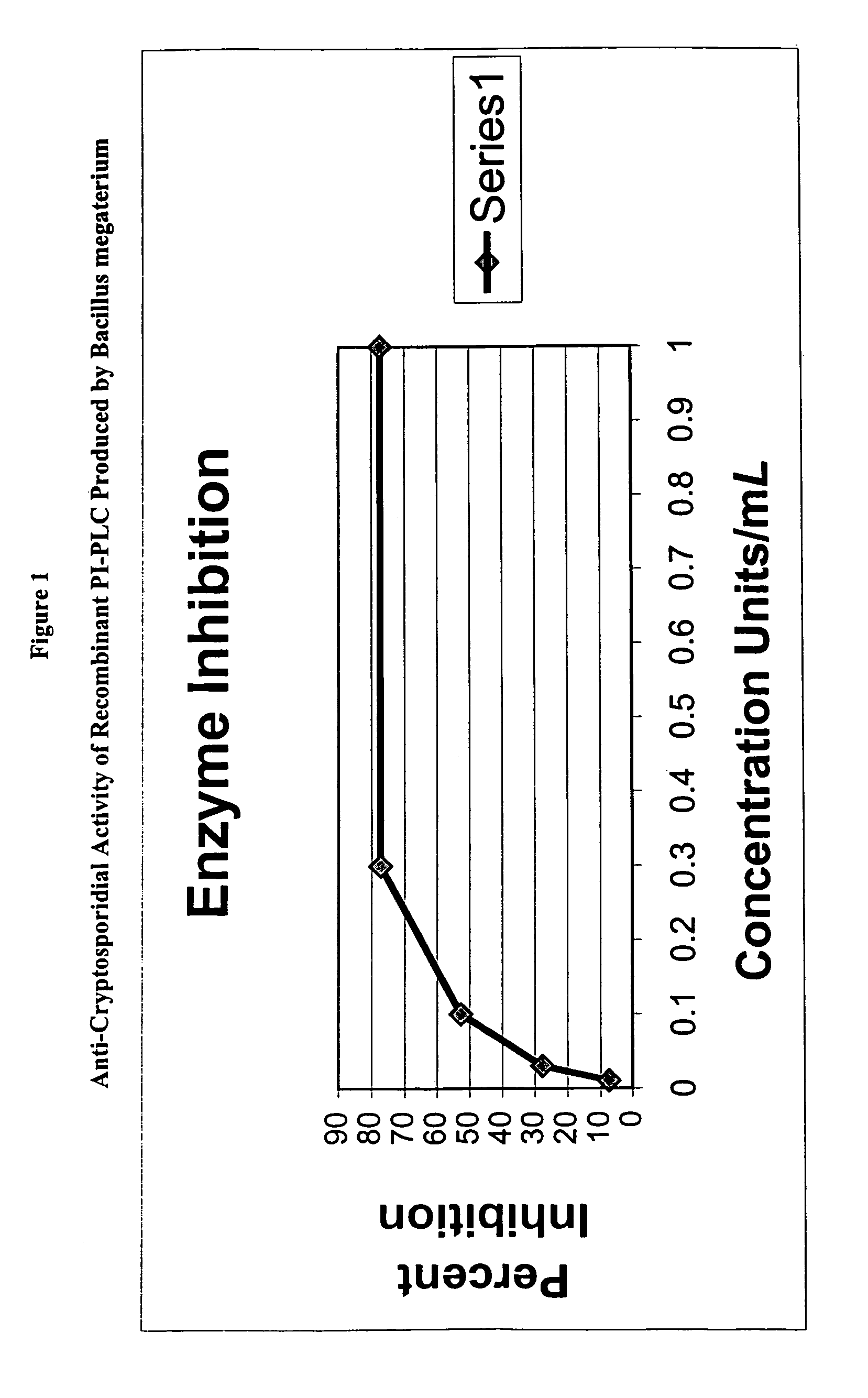Composition comprising beta-mannanase
- Summary
- Abstract
- Description
- Claims
- Application Information
AI Technical Summary
Benefits of technology
Problems solved by technology
Method used
Image
Examples
Example
EXAMPLE 1
Preparation of Frozen Stock Cultures of Bacillus cereus ATCC 6464 and ATCC 7004
[0057]Vials with lyophilized cells from the ATCC were opened and inoculated into a seed medium composed of Amberferm 4015 (Red Star) 10 g / L, Amberex 695 (Red Star) 5 g / L, and sodium chloride 5 g / L, pH 7.0 and grown at 30° C. The initial culture was streaked on LB Broth agar plates and a resulting single colony was inoculated back into 20 mL of seed medium in a 250 mL baffle flask (Bellco) and grown with shaking at 30° C. When the culture density reached OD600 reading of 1.5, sterile glycerol was added to approximately 10% v / v and vials containing 1.8 mL of culture were frozen at −80° C.
Example
EXAMPLE 2
Growth of ATCC 6464 and ATCC 7004 Isolates of Bacillus cereus for the Production of Phosphatidlyinositol Specific Phospholipase C
[0058]Two Biostat C fermentors, 30 liters each, were batched with medium of the following composition, in tap water: Nutrient Broth No. 2 (Oxoid) at 25 g / L, Tryptone (Difco) at 10 g / L, yeast extract (Difco) at 10 g / L, and Mazu DPI OP Mod11 antifoam (BASF) at 0.1 mL per liter. The initial batch volume was 9.5 L and the broth was sterilized at 121° C. for 40 minutes. The initial pH was adjusted to 7.0 with ammonia gas after sterilization.
[0059]Seed cultures were prepared in 500 mL of the same medium in 4-liter baffle shake flasks with aspirator connection (Bellco) with attached silicone tubing with connectors for inoculation. The flasks were sterilized in an autoclave at 121° C. for 50 minutes prior to inoculation with 1.8 mL of frozen stock culture prepared from the ATTC shipment (EXAMPLE 1). The seed flask cultures were grown at 30° C. for 5.5 hou...
Example
EXAMPLE 3
Cell Removal by Filtration and Concentration of PI-PLC Enzyme
[0062]Cells were removed and washed from each of the four fermentor batches described in EXAMPLE 2 using two A / G Technology (UFP-500-K-6A) 3 mm hollow fiber 500,000 molecular weight cut off (500 Kd NMWC) filters attached end to end. Chilled broth was pumped through the filters with a peristaltic pump at about 2 liters per minute with recycling back to the holding reservoir. The permeate containing the enzyme was collected in a reservoir chilled on ice. The initial cell-containing broth volume of about 9 liters was concentrated down to about 2 liters at which point diafiltation was started with 10 mMTris-HCl, pH 8.5. After a total volume of about 14 liters of permeate was collected, the cell washing was terminated.
[0063]The 500 Kd permeate (about 14 liters from each fermentor) was concentrated with two A / G Technology (UFP-10-C-4×TCA) 0.5 mm hollow fiber 10,000 molecular weight cut-off filters (10 Kd) attached end t...
PUM
| Property | Measurement | Unit |
|---|---|---|
| Composition | aaaaa | aaaaa |
Abstract
Description
Claims
Application Information
 Login to view more
Login to view more - R&D Engineer
- R&D Manager
- IP Professional
- Industry Leading Data Capabilities
- Powerful AI technology
- Patent DNA Extraction
Browse by: Latest US Patents, China's latest patents, Technical Efficacy Thesaurus, Application Domain, Technology Topic.
© 2024 PatSnap. All rights reserved.Legal|Privacy policy|Modern Slavery Act Transparency Statement|Sitemap

